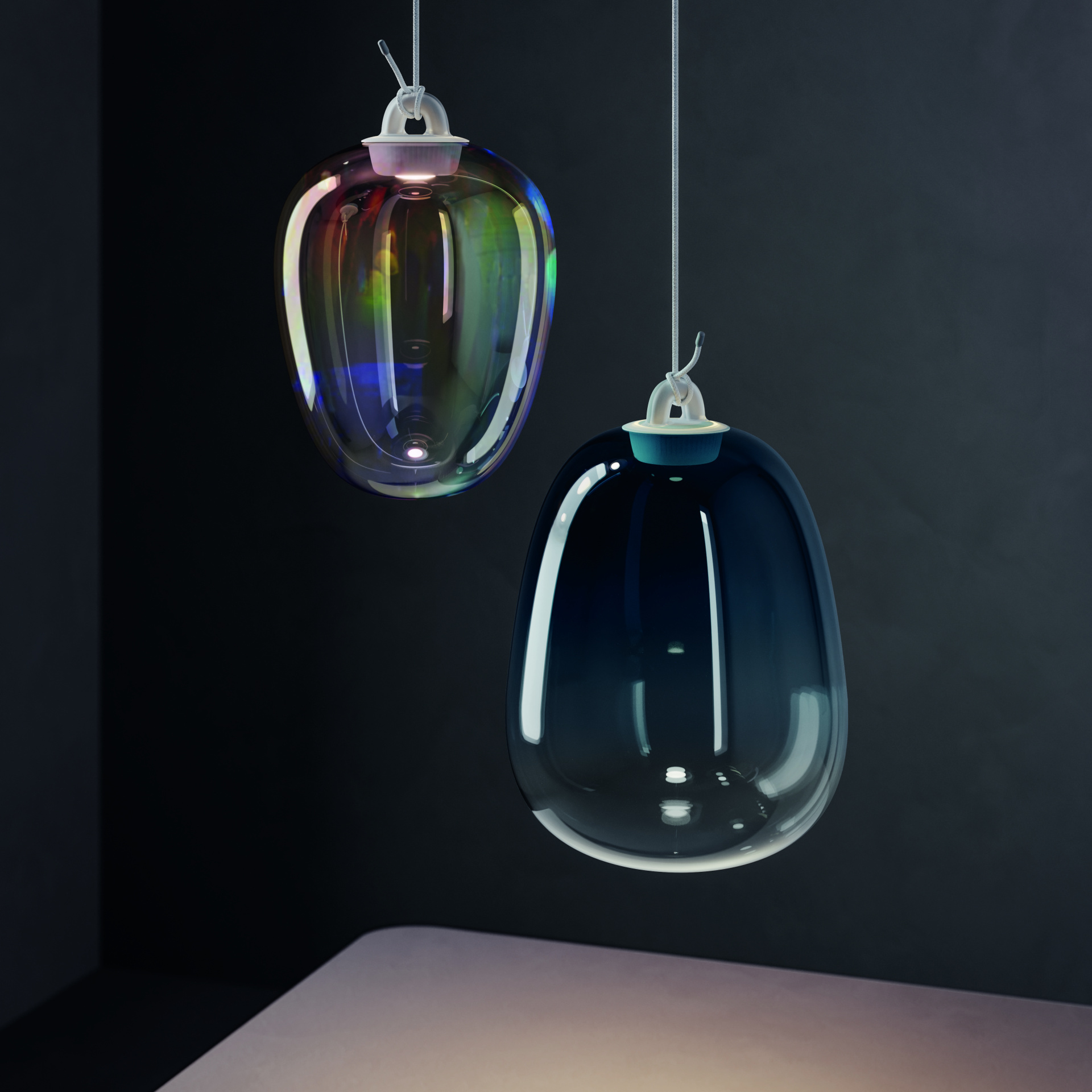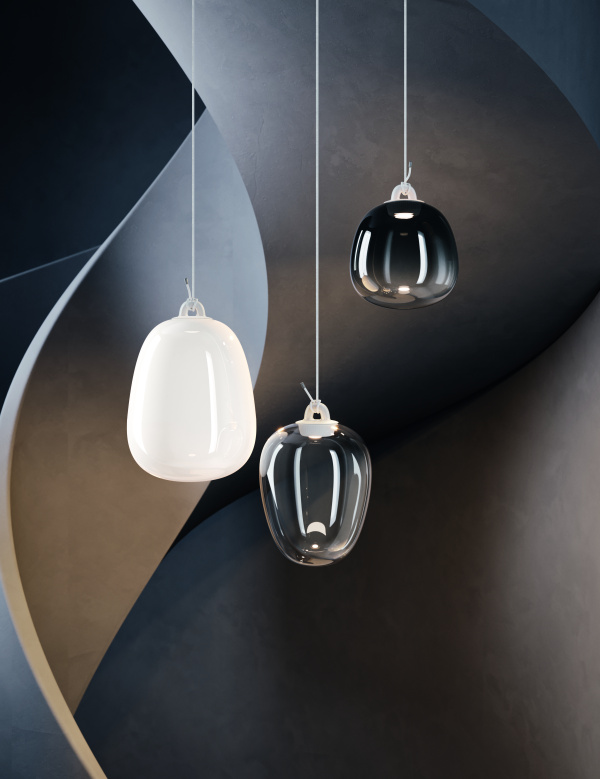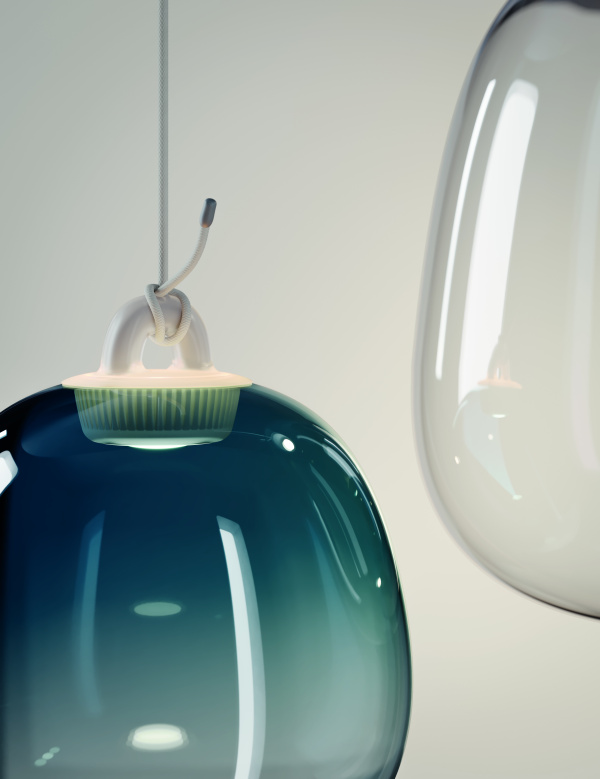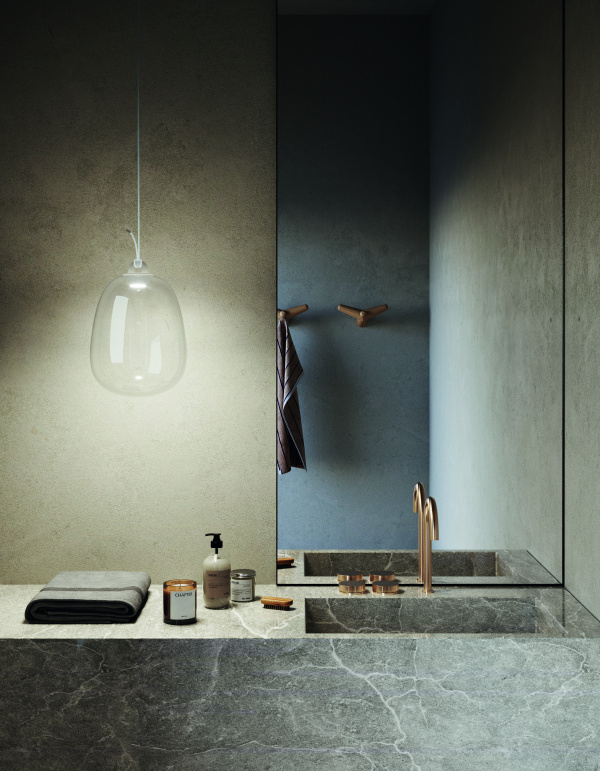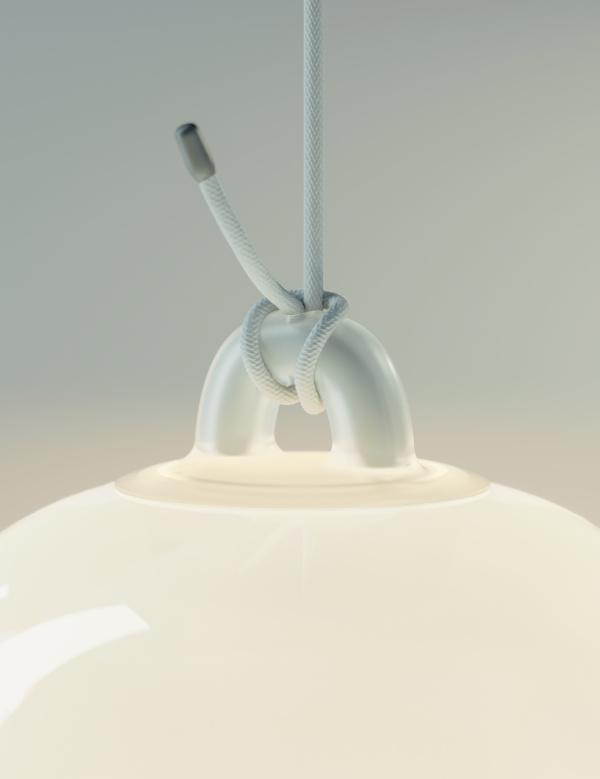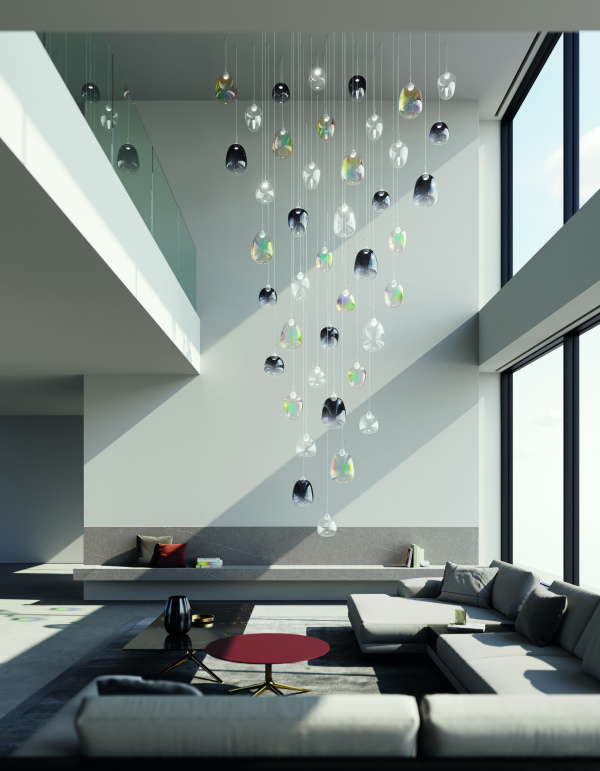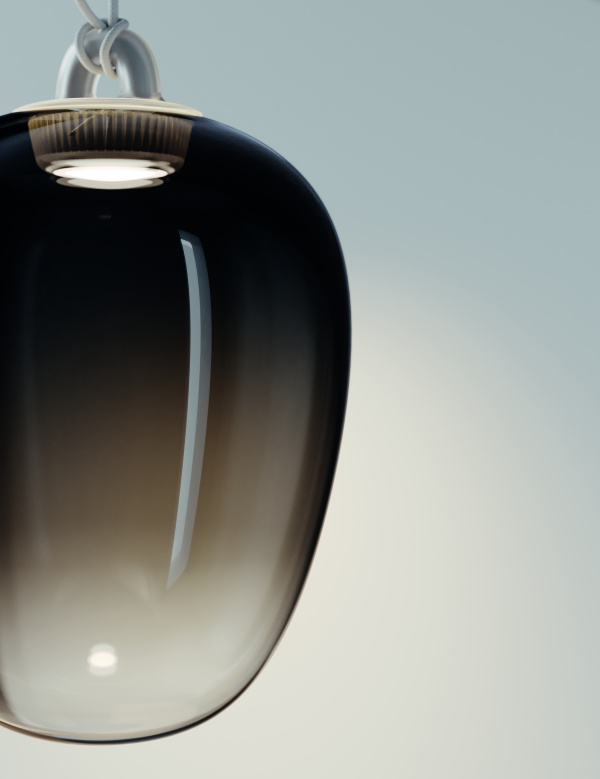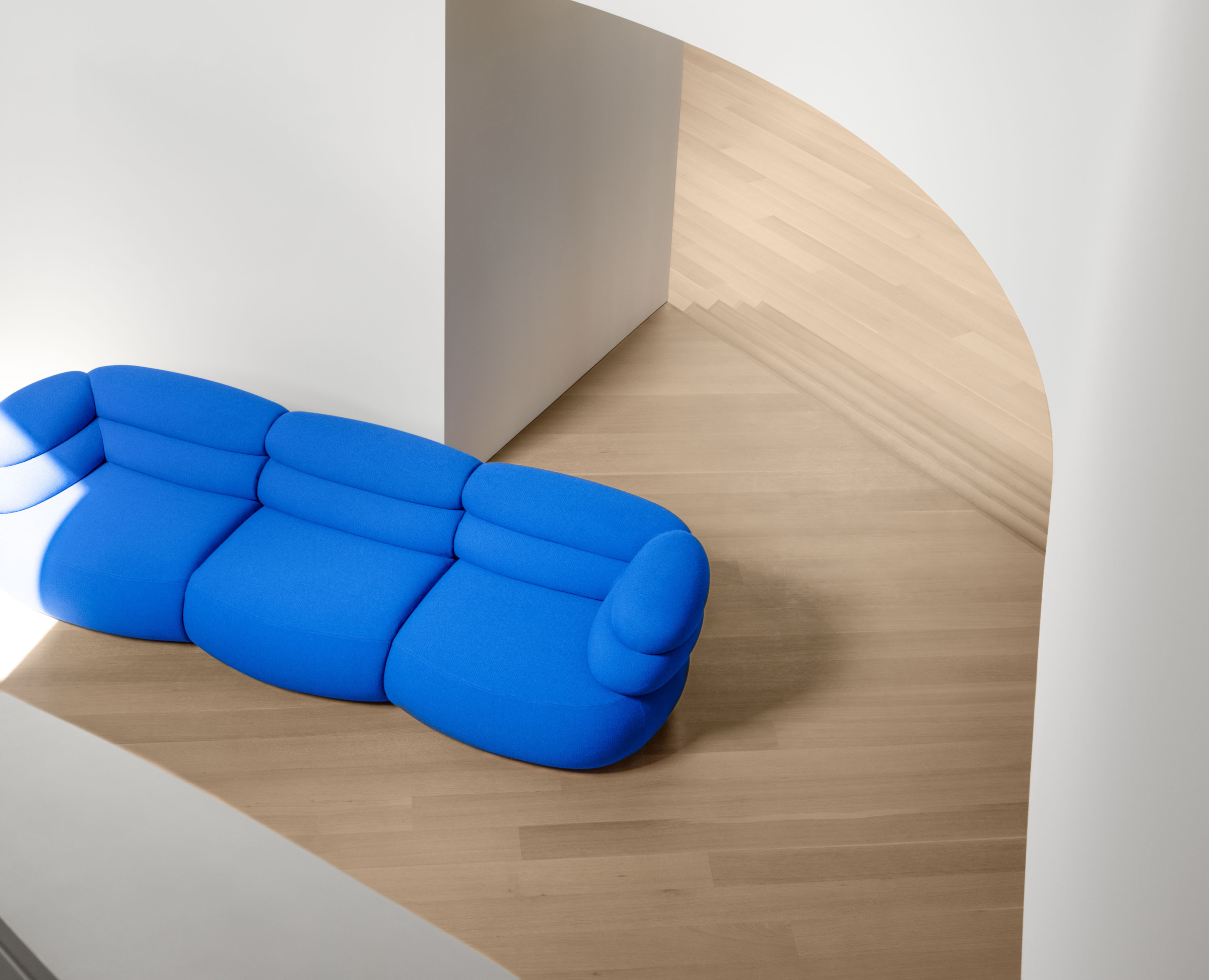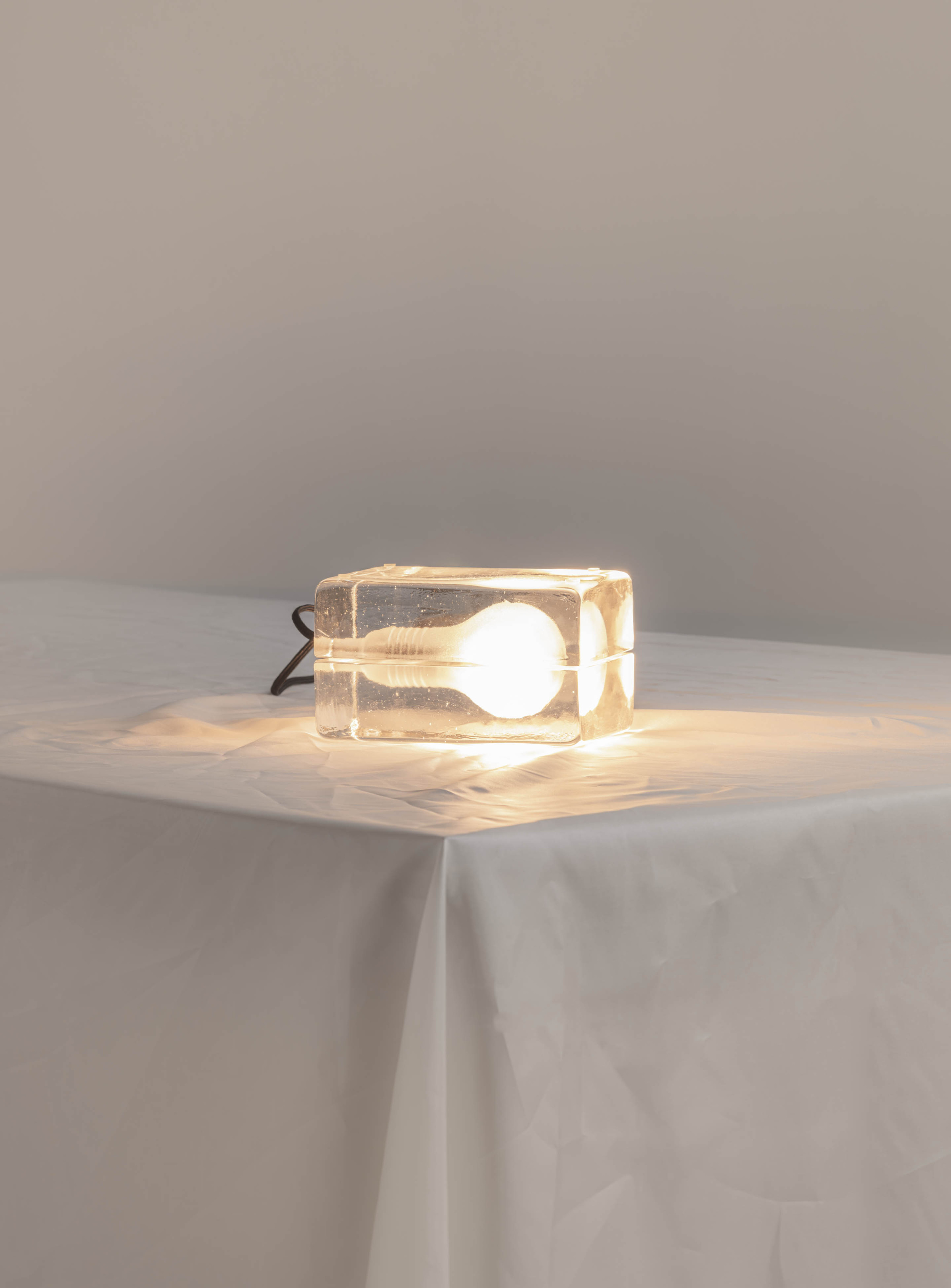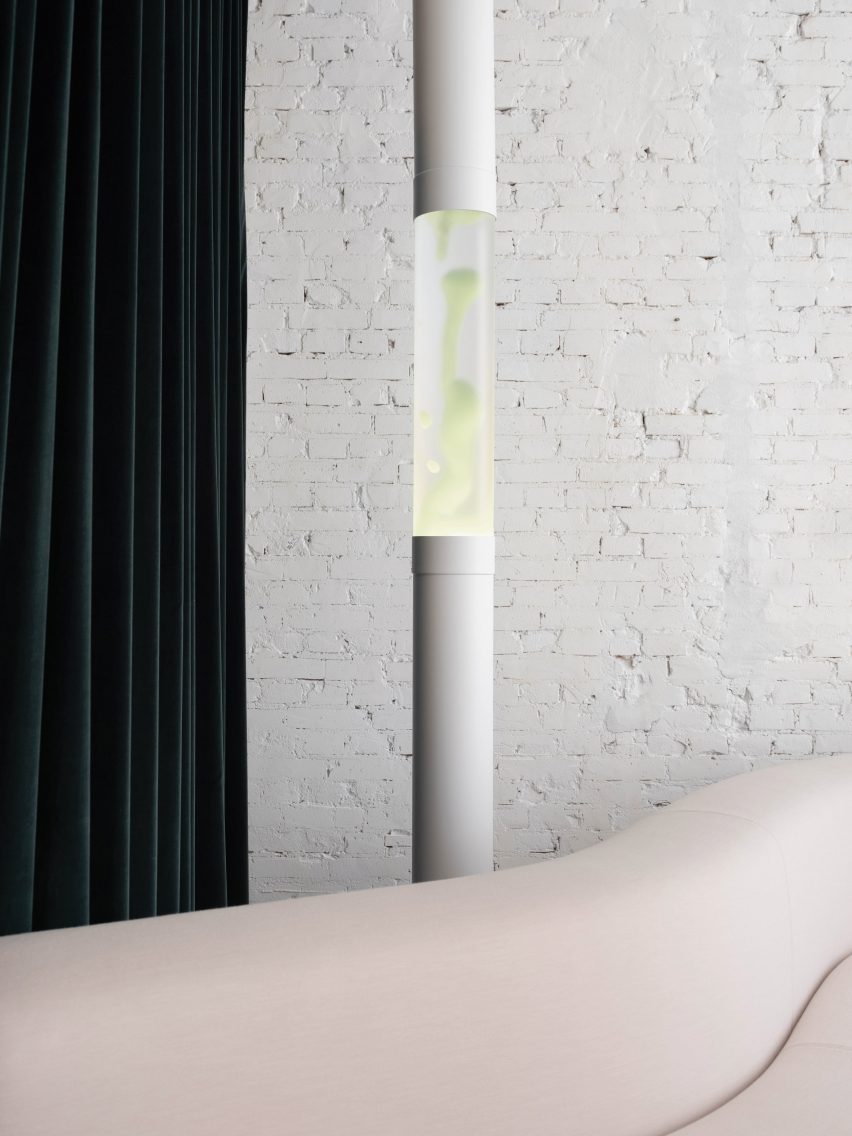When it comes to product design, designer Paola Navone of Otto Studio often leans into the savoir faire of her collaborators. Her partnership with Venice-based lighting company, Lodes, resulted in the creation of a glass pendant lamp, Oblò, the Italian word for “porthole.” Unique to typical pendants that utilize a thick glass, Oblò features an almost immaterial design with a fluid silhouette and a color palette evoking sensations of the sea.
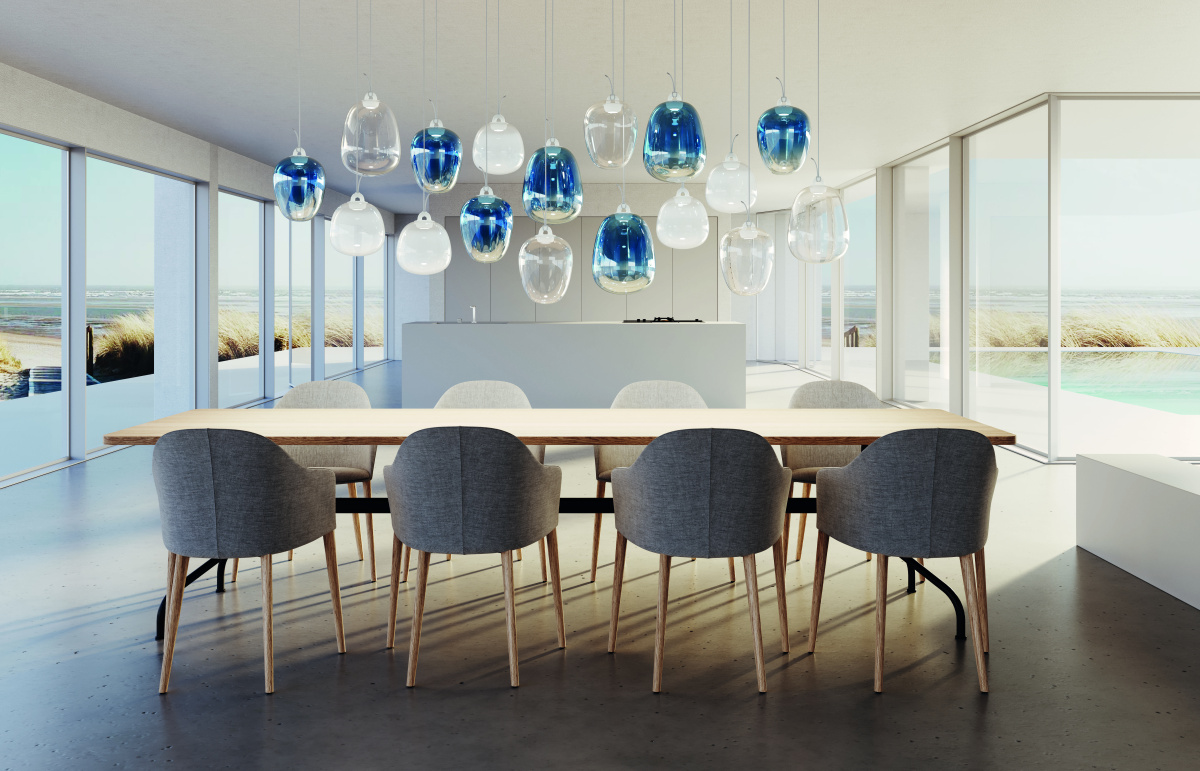
“You can fill a hotel lobby with 100 or 1,000 Oblò lights,” says designer Paola Navone. “It’s whatever you decide for your home or project.” Courtesy Lodes
Considering Venice is a city steeped in the tradition of glassmaking, Paola was drawn to Lodes’ expertise in working with borosilicate glass. Unlike the traditional Murano handblown technique, borosilicate glass is thin and fluid.
“If I had to describe it, the Murano handblown technique is like whipped cream,” Paola says. “Borosilicate is thin, like water. Everything about the design is subtle. Nothing is bulky, and nothing occupies your space. It’s there—but maybe not.”
This delicate material inspired her to conceive a design that was almost ethereal—a lamp that could float through the air like bubbles.
“I wanted the chandelier to be something almost non-existent,” she says. “You don’t see the object; you see some sort of ghost of the object layered in with light. Something you know is there, but if you touch it, it doesn’t exist anymore.”
- Paola envisioned the light’s shape to mimic the weight of the glass, with one design featuring a curved form that appears nearly oval, yet with one side flatter than the other.
- When conceptualizing Oblò, Paola was drawn to Lodes’ expertise in working with borosilicate glass. Unlike the traditional Murano handblown technique, borosilicate glass is thin and fluid. Courtesy Lodes
Oblò is offered in three globular shapes. Paola envisioned the light’s shape to mimic the weight of the glass, with one design featuring a curved form that appears nearly oval, yet with one side flatter than the other. This asymmetry adds to the lamp’s subtle presence, creating a sense of lightness and fluidity. Experimentation with color further enhanced the design, with finishes ranging from iridescent to metallic blue, silk white, glossy smoke, and transparent.
“Lodes knew how to add a little color to the glass, so we experimented with the idea,” she says. “One version of Oblò is clear, and another has a drop of black. Really it’s almost transparent, but the black creates a bit of a shadow layered over the light. The other one is iridescent, like a rainbow.”
- The design’s detailing also extended to the electrical elements, where Paola insisted on a single small wire rope to suspend the lamp.
- A white fabric cable is tied to the hook, delicately supporting the diffuser. The knot and cable possess both aesthetic and functional significance, envisioned by Paola to resemble naval ropes. Courtesy Lodes
Despite its modest size, Oblò is a bright and effective lamp. The design’s detailing also extended to the electrical elements, where Paola insisted on a single small wire rope to suspend the lamp. Rather than creating a design that was fraught with cables, Oblò features a hook, comprising a metal core coated with semi-transparent silicone. A white fabric cable is tied to the hook, delicately supporting the diffuser. The knot and cable possess both aesthetic and functional significance, envisioned by Paola to resemble naval ropes.
“I told them, ‘You have to find a solution, because I only want one small wire rope,’” she says. “I wanted it to float down from the ceiling like a buoy on the water. They came up with a solution that produces a quite magical effect.”
- Whether placed in a bathroom, a hotel lobby, or a kitchen, the lamp’s subtle elegance adapts to any space.
- “Now I’m waiting to see to who and where this lamp will go,” Paola says. “They’re so ‘nothing’ that probably everyone will love it.” Courtesy Lodes
When asked about the ideal setting for Oblò, Paola emphasized its versatility. Whether placed in a bathroom, a hotel lobby, or a kitchen, the lamp’s subtle elegance adapts to any space.
“You can fill a hotel lobby with 100 or 1,000 of them,” she says. “You can buy six of them for your kitchen like you’d buy six eggs. The way it’s utilized can be very flexible and free. It’s not better to use one or 1,000—it’s whatever you decide for your home or project.”
As the Oblò pendant makes its debut, Paola eagerly anticipates its journey into the world.
“Now I’m waiting to see to who and where this lamp will go,” she says. “They’re so ‘nothing’ that probably everyone will love it.”
A version of this article originally appeared in Sixtysix Issue 12.
